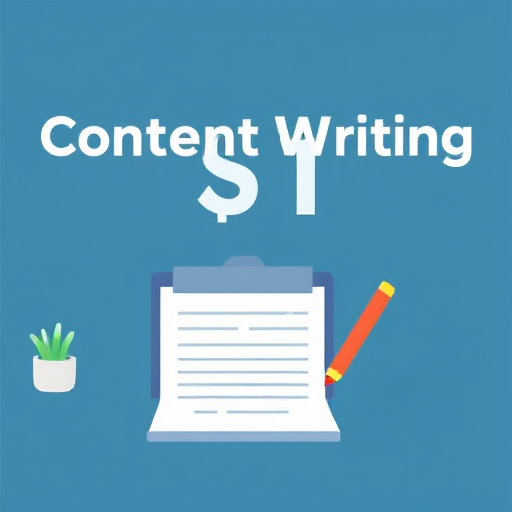Content Writing Vs Copywriting
Content Writing vs Copywriting: Understanding the Differences
While content writing and copywriting are often used interchangeably, they serve distinct purposes in the world of digital marketing, business communication, and online publishing. Both types of writing are crucial for engaging audiences and promoting brands, but the approach, style, and goals of each vary significantly.
Here’s a comprehensive breakdown of the differences between content writing and copywriting, and why understanding these distinctions is essential if you want to pursue a career in either field.
Find Out How To Make Money As A Full-Time Writer/Blogger Guide.
What Is Content Writing?
Content writing is focused on providing informative, educational, or entertaining material to engage an audience over the long term. The primary goal is to build a connection with readers, provide valuable insights, and encourage them to return for more information.
Key Characteristics of Content Writing:
- Purpose: To educate, inform, or entertain.
- Tone: Can vary from professional to conversational, depending on the target audience.
- Objective: To build trust, increase brand awareness, and provide value over time.
- Format: Blogs, articles, eBooks, social media posts, newsletters, how-to guides, white papers, and case studies.
- SEO: Search engine optimization is often a crucial part of content writing to drive organic traffic to websites through valuable, keyword-rich content.
- Target Audience: Focused on attracting and nurturing potential customers by addressing their pain points, answering questions, and offering solutions.
Examples of Content Writing:
- A detailed blog post explaining the benefits of organic skincare.
- An informative guide on how to start an online business.
- A newsletter providing tips on time management for entrepreneurs.
What Is Copywriting?
Copywriting, on the other hand, is primarily focused on persuading the reader to take immediate action. This action might involve making a purchase, signing up for a newsletter, downloading an app, or clicking on a link. Copywriting is more sales-driven, often appealing to emotions and urgency to convert readers into customers.
Key Characteristics of Copywriting:
- Purpose: To persuade or motivate the reader to take a specific action.
- Tone: Direct, persuasive, and often urgent, depending on the type of campaign.
- Objective: To generate sales, leads, or other conversions in a short time frame.
- Format: Ads (online or print), landing pages, sales pages, email campaigns, slogans, product descriptions, and promotional content.
- Target Audience: Copywriting focuses on motivating individuals already in the buying process or those who need to be convinced to act immediately.
- Call to Action (CTA): Copywriting always includes a strong call to action, whether it’s “Buy Now,” “Sign Up Today,” or “Claim Your Free Trial.”
Examples of Copywriting:
- A Facebook ad promoting a 50% discount on a limited-time offer.
- A landing page designed to get users to register for a webinar.
- A product description aimed at convincing shoppers to add the item to their cart.
You Can Start A News Blog To Get Fast Grow
Major Differences Between Content Writing and Copywriting
- Goal and Purpose
- Content Writing: Aims to inform, engage, or educate the reader over time. It’s more about providing value to the audience without pushing for an immediate action.
- Copywriting: Aims to persuade the reader to take action right away, whether it’s making a purchase or signing up for a service. It’s directly tied to sales and lead generation.
- Tone and Approach
- Content Writing: Tends to have a more relaxed, conversational tone, though it can also be formal or technical depending on the subject matter. The focus is on building relationships through valuable content.
- Copywriting: More aggressive and persuasive. The tone is typically more direct and action-oriented, designed to grab attention and push the reader toward a decision.
- Audience Engagement
- Content Writing: Aims to attract a broader audience, nurture them, and build trust over time. Content writing plays the long game by establishing a connection and delivering consistent value.
- Copywriting: Targets readers who are already in the decision-making process and need that final push to convert. It’s often used in marketing campaigns aimed at immediate engagement and action.
- Time Frame
- Content Writing: Usually involves a long-term strategy focused on providing continuous value and building authority over time. Content can exist for months or years, contributing to SEO and brand awareness.
- Copywriting: Often focused on short-term results. Campaigns are usually time-sensitive, aiming to generate quick conversions like sales or sign-ups.
- SEO (Search Engine Optimization)
- Content Writing: SEO plays a critical role. Writers often focus on creating keyword-optimized content that helps drive organic traffic from search engines. The more optimized and valuable the content, the better it performs in search rankings.
- Copywriting: SEO can still be important, but it’s not the primary focus. The goal is more about crafting compelling messages and CTAs that convert. Keywords may be included but are not as central to the strategy as they are in content writing.
Get 20 Blog Post For A Price Of Coffee: Content Is King
When to Use Content Writing vs Copywriting
- Content Writing is best used when your goal is to:
- Build brand awareness.
- Educate or inform your audience about a topic.
- Generate long-term engagement.
- Improve SEO and organic reach.
- Provide value without immediately pushing for a sale.
- Copywriting is best used when your goal is to:
- Promote a product, service, or event.
- Drive quick sales or sign-ups.
- Create urgency or appeal to the reader’s emotions.
- Launch a specific campaign with a short-term focus.
- Encourage readers to take immediate action through CTAs.
Can Content Writing and Copywriting Overlap?
Yes, content writing and copywriting can overlap. For example, a blog post (content writing) may include a persuasive call to action (copywriting) at the end, encouraging readers to subscribe to a newsletter or purchase a product. Similarly, a landing page designed primarily for sales (copywriting) might also contain educational information or product descriptions (content writing) that help inform the buyer before making a decision.
Writers who master both content writing and copywriting are highly sought after because they can create engaging material while also driving conversions. Businesses need both types of writing to succeed in the digital landscape.
While both content writing and copywriting are crucial for business success, they serve different purposes. Content writing nurtures long-term relationships and builds trust, while copywriting focuses on persuading readers to take action quickly. Understanding the distinctions between the two helps you create more effective strategies, whether you’re aiming to educate, engage, or convert your audience. Writers who master both skills can maximize their earning potential and deliver significant value to clients across various industries.







